
| Publisher: | New Press | |
| Genre: | Fiction, Literary | |
| ISBN: | 9781595581921 | |
| Pub Date: | October 2012 | |
| Price: | $26.95 |
| Starred | Fiction |
by Henning Mankell, trans. by Ebba Segerberg
Henning Mankell takes a break from his popular Kurt Wallander series in The Shadow Girls, but crime fiction still makes its presence felt--because Jesper Humlin, a poet of mediocre success, is being badgered by everyone around him to write a crime novel, since it will be much more financially lucrative.
Plagued by his phone-sex operator mother, his nagging girlfriend, his unsympathetic editor and the broker who poorly invested his money, Humlin escapes from Stockholm to Gothenburg to do a poetry reading. There he meets three young girls--Leyla, Tanya and Tea-Bag--who will dramatically change his life. Each of these girls arrived in Sweden as refugees from other countries through very difficult circumstances; each has a haunting, horrifying tale to tell. Humlin finds himself wanting to share their stories and write a novel about the changing face of Sweden--if only he can manage to avoid writing the crime novel his editor has already started publicizing.
The Shadow Girls is a bit odd at first glance; Humlin's changing perception of the world and his bizarre arguments with everyone in his life are comical, in spite of the somber subject. But Mankell's masterful way with words, and the shocking things that Leyla, Tanya and Tea-Bag have had to endure, will keep the reader engrossed. The Shadow Girls offers a timely look at questions of immigration, faith and family that Sweden (and the rest of Europe) are currently facing. --Jessica Howard, blogger at Quirky Bookworm
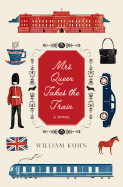
| Publisher: | Harper | |
| Genre: | General, Fiction | |
| ISBN: | 9780062208286 | |
| Pub Date: | October 2012 | |
| Price: | $25.99 |
| Fiction |
by William Kuhn
Her Majesty, the Queen of England, is depressed. She reads biographies about the royal family and writes "not true" or "never happened" in the margins. To keep calm and fit as she grows older, she takes up yoga and even tries to learn the computer. But nothing can ease her sadness over her children's marriages breaking up, the death of Princess Diana, the fire at Windsor Castle and other woes. This is the set-up to William Kuhn's Mrs. Queen Takes the Train, an affecting, yet amusing, fictitious look at Queen Elizabeth II.
When the Prime Minister informs her the government can no longer subsidize the Royal Train--an outdated, expensive mode of transportation dedicated exclusively for official monarchy business--the 80-year-old Queen is delivered a final jolt. She walks away from Buckingham Palace, unattended, on a rainy day. Cloaked beneath a borrowed hoodie with a skull stenciled on the back, she sets off for King's Cross, London's busiest train station, en route to the royal yacht moored in Scotland. Along the way, she encounters an array of ethnically diverse commoners--some who mistake her for a homeless person, others for Helen Mirren.
Around the suspense and excitement of Her Majesty's mysterious disappearance, Kuhn works in engaging stories about the lives of those who work behind the scenes at the palace and know Queen Elizabeth best. The result is a clever, funny sendup mirroring contemporary British life while portraying the Queen as an emblem of "correctness... in a secular era." --Kathleen Gerard, blogger at Reading Between the Lines
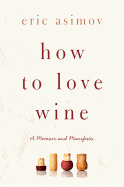
| Publisher: | Morrow | |
| Genre: | Beverages, Biography & Autobiography, Cooking, Wine & Spirits, Antiques & Collectibles, Personal Memoirs, Wine | |
| ISBN: | 9780061802522 | |
| Pub Date: | October 2012 | |
| Price: | $24.99 |
| Food & Wine |
by Eric Asimov
Eric Asimov, chief wine critic of the New York Times, believes great wine is "a true expression of a terroir... [with] a story to tell about where it came from, both geologically and culturally, and about the people who shepherded the transformation of grapes to wine and that year in history." How to Love Wine follows this same spirit, exploring the influence of Asimov's own "terroirs"--New York City, Paris, Chicago and Austin--on his passion for food and wine on the path to his perfect job.
Before beginning the autobiographical aspects of his memoir, Asimov first explores the subject of "wine anxiety," hoping to replace this fear with a sense of ease and joy. But even when he's talking about his own story, he includes frequent detours covering why he believes this is the Golden Age of Wine Drinking, and why blind tastings, tasting notes, shelf talkers and scores undermine an experience that should be purely pleasurable.
Asimov describes his memoir as "a gathering of impressions through experience," yet provides so much more, imparting confidence to freshman oenophiles through a concrete plan for learning to love wine. Just as the best wines reflect their roots yet resonate with the drinker, the best memoirs rise above one person's experiences. How to Love Wine not only fulfills its titular promise, but is an engaging peek into a world so many already love. --Kristen Galles from Book Club Classics

| Publisher: | Pantheon | |
| Genre: | Art, History, Biography & Autobiography, Artists, Architects, Photographers, European, Modern (Late 19th Century to 1945) | |
| ISBN: | 9780307377074 | |
| Pub Date: | October 2012 | |
| Price: | $40 |
| Biography & Memoir |
by Alex Danchev
If the price of an artist's work measures his stature, the $250 million paid for Cézanne's The Card Players in 2011 suggests he was the greatest artist in history. As Alex Danchev's biography details, Cézanne certainly was prolific: "His lifetime production of paintings was 954," Danchev reports, but "to these should be added 645 watercolors and around 1,400 drawings." He was also repetitive--or, more charitably, drawn to the same subjects (such as bathers, his wife and his sleeping son) over and over again.
These and many other arcane specifics of the career that arguably ushered in the era of "modern art," are carefully noted throughout Cézanne: A Life. We learn the nuances of his paint mixing and knife work, his annual stipend from a disapproving wealthy father, the original prices of his work, even his daily log of meals (lots of "beef and kidneys"). More importantly, Danchev outlines the observations of his early close friend Zolá and later friend and mentor Pissarro (among many others) as he fills in a comprehensive portrait that includes the entire rich panoply of notable artists and writers in late 19th-century Paris. Forget the price of The Card Players; Cézanne's stature is perhaps better exemplified by Heidegger's words of admiration: "He said: 'Life is terrifying.' I have been saying just that for forty years." It takes some kind of genius to express that in a bowl of apples. --Bruce Jacobs
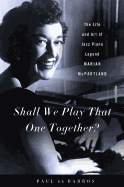
| Publisher: | St. Martin's Press | |
| Genre: | General, Biography & Autobiography, Women, Composers & Musicians | |
| ISBN: | 9780312558031 | |
| Pub Date: | October 2012 | |
| Price: | $35 |
| Biography & Memoir |
by Paul De Barros
Marian McPartland has enjoyed a decades-long career as one of the top jazz pianists in the United States, and has become widely recognized as the host of NPR's Piano Jazz. In Shall We Play That One Together?, music journalist Paul de Barros chronicles McPartland's story, beginning with her childhood in England, her classical training at the Guildhall School and her move to London as a young woman. Enamored of jazz, Marian found herself playing with the USO during the Second World War, and met her husband, cornetist Jimmy McPartland, in France. Their lives and careers intertwined, though Jimmy's alcoholism and the differences in their work ethics led to trouble and later divorce.
As her fame grew, Marian's story became inextricably linked with that of U.S. jazz culture in the 20th century. Through Jimmy's connections and her own work, she played with dozens of the world's top jazz musicians at a range of clubs and festivals. The names and details of all these people, places and songs are sometimes dizzying, though De Barros provides sufficient context for readers who are not jazz aficionados.
Despite her famously strong personality, Marian loved collaborating with other musicians, learning from every concert, album and festival. Piano Jazz, a radio program built around Marian and a guest talking shop and playing together, grew out of that spirit of inventiveness and cooperation. Shall We Play That One Together? captures the joie de vivre of an age where jazz felt vital, along with the spirit of a woman willing to share the music she loved with anyone who would listen. --Katie Noah Gibson, blogger at Cakes, Tea and Dreams
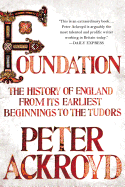
| Publisher: | Thomas Dunne | |
| Genre: | General, Great Britain - General, History, Civilization, Social History, Europe, Military, Medieval | |
| ISBN: | 9781250003614 | |
| Pub Date: | October 2012 | |
| Price: | $29.99 |
| History |
by Peter Ackroyd
As the first of a planned six-volume series, Peter Ackroyd's Foundation embarks on an ambitious project: to chronicle the whole of English history, from its misty prehistory to current times. One could hardly have hoped for a better start, as Ackroyd (London: The Biography) paints a portrait of early England that is both historically rich and compellingly human.
Foundation begins with archeological artifacts that predate written English records and concludes with the death of the first Tudor king, Henry VII, in 1509. In between, Ackroyd uses the familiar English-history checklists of dates, battles and endlessly numbered kings not as a focus, but as a framework. Among the well-memorized signposts--1066, Henry I and his surfeit of lampreys, Richard the Lionheart, and so on--Ackroyd inserts lesser-known yet closer-to-home details of English life, with chapters exploring early English social structures, courts and justice, village life and even jokes and swear words.
The result is a remarkably fascinating and accessible history of early England, populated not only by dusty kings, but by generations of ordinary people being and becoming English--and developing a sense that we, too, are living parts of an ongoing story. --Dani Alexis Ryskamp, blogger at The Book Cricket
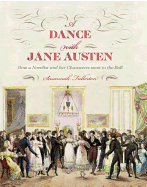
| Publisher: | Frances Lincoln | |
| Genre: | Biography & Autobiography, Literary | |
| ISBN: | 9780711232457 | |
| Pub Date: | October 2012 | |
| Price: | $24.95 |
| History |
by Susannah Fullerton
It is a truth universally acknowledged by Jane Austen fans that their favorite author loved to dance. Her letters contain many sharp, witty descriptions of the balls she attended, and her brief romance with Tom Lefroy began at a dance. Susannah Fullerton (Jane Austen and Crime) presents a beautifully illustrated exploration of dance in Austen’s life and novels in A Dance with Jane Austen.
Fullerton explores various facets of dance in the Regency era, from proper dress and etiquette for both sexes to a typical midnight supper menu (including a recipe for "white soup"). She discusses footwear, transportation and music, explains the different types of balls attended by Austen and her characters and emphasizes the central importance of balls as a place to search for, meet and court one's future spouse.
The period illustrations and dance diagrams are charming, but Fullerton's discussion of dance in Austen's novels is both incisive and entertaining. From the Netherfield ball in Pride and Prejudice to Anne Elliot playing the piano as her friends dance in Persuasion, Fullerton explains how dancing moves the action forward in each book and what it reveals about various characters. (She even draws heavily on the unfinished The Watsons.) By the end, readers will long to revisit the dance scenes in Austen's world and follow her heroines' practice of talking over the ball afterward with friends over a cup of tea. --Katie Noah Gibson, blogger at Cakes, Tea and Dreams

| Publisher: | Farrar, Straus & Giroux | |
| Genre: | United States, Biography & Autobiography, History, Revolutionary War, Presidents & Heads of State | |
| ISBN: | 9780374299569 | |
| Pub Date: | October 2012 | |
| Price: | $28 |
| History |
by Henry Wiencek
Henry Wiencek studied George Washington's convoluted relationship to slavery in An Imperfect God; with Master of the Mountain, he turns his attention to Thomas Jefferson. As one would expect, Sally Hemings is a crucial part of the story, but Wiencek also meticulously records the experiences of many others among the more than 600 slaves Jefferson owned in his life, offering a detailed portrait of daily life at Monticello.
After speaking out eloquently about the need for emancipation early in his life, Jefferson not only let pass several opportunities to push for abolition but worked to maintain the existence of slavery, noting the profits to be had--even though in public writings and correspondence with anti-slavery activists, Jefferson continued to claim a devotion to human rights and disgust with the "peculiar institution." Wiencek appears briefly to consider the forgiving popular characterization of Jefferson's relationship with slavery as "compartmentalized" or "complex." But as Jefferson devolves from a youthful, idealistic opponent to a staunch defender of slavery, Wiencek firmly condemns Jefferson's pretense of virtue, put to the lie by the abuses at Monticello. Master of the Mountain is well-documented and detailed without being tedious. The stories of real people come alive, making Jefferson's wrongs all the more painful and his hypocrisy the more outrageous. The final chapter calls this founding father to account in no uncertain terms. --Julia Jenkins, librarian and blogger at Pages of Julia
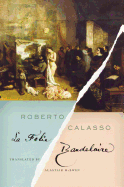
| Publisher: | Farrar, Straus & Giroux | |
| Genre: | Literary Criticism, General, Biography & Autobiography, French, European, Literary, Poetry | |
| ISBN: | 9780374183349 | |
| Pub Date: | October 2012 | |
| Price: | $35 |
| Starred | Essays & Criticism |
by Roberto Calasso, trans. by Alastair McEwen
In La Folie Baudelaire, Roberto Calasso describes the life, work and world of symbolist poet Charles Baudelaire with an image borrowed from 19th-century French critic Charles Saint-Beuve: the "highly decorated, highly tormented but graceful" architectural extravagance known as a garden folly. Saint-Beuve used the image to disparage Baudelaire's work, but in Calasso's hands it becomes high praise.
Part of Calasso's ongoing exploration of the nature of modernity that began with the acclaimed Ruin of Kasch (1983), La Folie Baudelaire is not a biography, though the reader will learn much about Baudelaire's life along the way. Instead, Calasso uses Baudelaire and his writing as a lens through which to consider the literary and artistic world of 19th-century Paris. Baudelaire leads Calasso and the reader to poets, painters and prostitutes; to Gautier and Flaubert; to Ingres, Delacroix and Degas; to romanticism, decadence, symbolism and, ultimately, to modernity.
La Folie Baudelaire is fascinating, but it is not an easy read. Even the best-educated reader may want to keep a dictionary close at hand. Calasso's style is both erudite and lyrical--as allusive as that of the poet who stands at the center of the work. Instead of a narrative history, the work is constructed as a series of loosely linked meditations that move back and forth through time--an innovative and eccentric format developed by Calasso in his earlier works. Despite its challenges, any reader interested in the period--or the poet--will find La Folie Baudelaire worth the effort. --Pamela Toler, blogging at History in the Margins
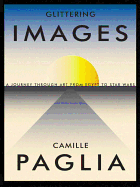
| Publisher: | Pantheon | |
| Genre: | Art, General, History, American, Contemporary (1945- ), European | |
| ISBN: | 9780375424601 | |
| Pub Date: | October 2012 | |
| Price: | $30 |
| Art & Photography |
by Camille Paglia
Critic Camille Paglia is very angry, and in Glittering Images she doesn't hold back in explaining why. In this "age of vertigo," she believes, we have no focus; the steady contemplation of art would reteach us to see--if only Americans didn't have such "open animosity" toward the art world, because the schools have utterly failed to educate students about it. So she embarks on a 5,000-year survey of select works of art--some great, some minor, all with something profound to say to those who will stop and look with an open mind.
The artistic works explored in Paglia's pithy essays, from an "elegant apparition" of Queen Nefertari painted on an ancient Egyptian wall to George Lucas's Revenge of the Sith, will always inform and sometimes surprise. With full color plates reproducing each of the works under discussion, recognizable masterpieces like Titian's revealing Venus with a Mirror and Picasso's "overwhelming and intimidating" Les Demoiselles d'Avignon are juxtaposed with John Wesley Hardrick's portrait of dress designer Xenia Goodloe and Eleanor Antin's 100 Boots postcard series--and, as mentioned, the films of George Lucas, one of the "most powerful and tenacious minds in contemporary culture."
Paglia's scintillating prose, acute analysis and perceptive assessments of five millennia of art history make her tour a joy to take, to argue about and to learn from. --Tom Lavoie, former publisher
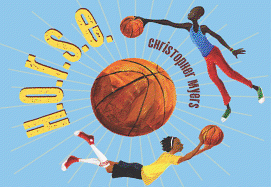
| Publisher: | Egmont USA | |
| Genre: | Sports & Recreation, Basketball, Juvenile Fiction | |
| ISBN: | 9781606842188 | |
| Pub Date: | October 2012 | |
| Price: | $18.99 |
| Starred | Children's & Young Adult |
by Christopher Myers
In this brilliant meditation on basketball and imagination, Caldecott Honor artist Christopher Myers (Harlem; Wings) depicts the game as a series of maneuvers, bluffs and boasts between two players who connect through competition.
A boy in a yellow T-shirt and gray headband approaches another, sporting a blue jersey and a Pan-African wristband. Myers unites them from the start with the blue background behind the yellow T-shirted new arrival, and the golden backdrop behind the blue-jerseyed host. The words of the "guest" appear in black type; the words of the host are in brown type. The new arrival asks the host (the boy in blue possesses the ball), if he'd like to play a game of horse. "Horse?" the host replies. "Yeah," says the boy in the yellow jersey, explaining the rules. One person shoots "any kind of shot" and the other player has to do the same shot or he gets a letter. The first to spell "horse" is out. The host gets the rules: "Right, we call it 'ghost' where I come from.... You start." The guest says, "Okay, layup with my eyes closed." Each new shot to be matched ups the ante and takes the competitors farther afield, to the rooftop of a skyscraper, and sailing over the Pacific. They take "out of bounds" to a completely new level.
This imaginative urban tall tale begins in the known sphere of the cement playground and spins out of this world, among the stars. --Jennifer M. Brown, children's editor, Shelf Awareness
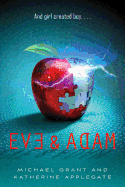
| Publisher: | Feiwel & Friends | |
| Genre: | Science Fiction, Science & Technology, Juvenile Fiction, Action & Adventure | |
| ISBN: | 9780312583514 | |
| Pub Date: | October 2012 | |
| Price: | $17.99 |
| Children's & Young Adult |
by Katherine Applegate, Michael Grant
This compulsively readable science-fiction thriller from husband-and-wife team Michael Grant (BZRK; the Gone series) and Katherine Applegate (The One and Only Ivan) stars teenage Eve Spiker, who's assigned an unusual task by her mother: to create the perfect male.
Eve has survived a run-in with a San Francisco trolley that would have crippled anyone else--anyone whose mother was not the brilliant mind behind Spiker Biopharmaceuticals. Terra Spiker and one of her gofers, Solo Plissken, whisk Eve away from the E.R. back to the Spiker labs. Solo is the first to point out Eve's lightning-quick recovery; Eve begins to wonder what's really going on in the lab--and suspects Solo knows a lot more than he's admitting. As the co-authors cut back and forth between Eve's and Solo's first-person narratives, they slowly uncover, layer by layer, the work of the labs and the reasons Solo seems so fiercely resentful of Eve's mother. Each teen has his or her own preconceived notions, which cause them to put up blinders until they cannot escape the truth. Eve's best friend, Aislin, introduces a number of hairpin plot twists, and when Solo helps the two friends sneak out of Spiker labs, Eve believes she's made an ally. Or is Solo using Eve to get revenge on Terra Spiker?
Grant and Applegate investigate larger themes of what it means to play god, and the moral dilemmas that accompany that responsibility. Humor and romance leaven the proceedings. Give this to fans of Nancy Farmer's The House of the Scorpion. --Jennifer M. Brown, children's editor, Shelf Awareness
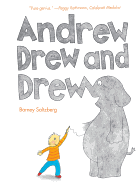
| Publisher: | Abrams Appleseed | |
| Genre: | Imagination & Play, Juvenile Fiction, Art & Architecture | |
| ISBN: | 9781419703775 | |
| Pub Date: | October 2012 | |
| Price: | $15.95 |
| Children's & Young Adult |
by Barney Saltzberg
Far from feeling intimidated by a blank canvas, Andrew sees only the possibilities. Barney Salzberg's (Arlo Needs Glasses) latest picture book again shows children there are no limits to the imagination.
"Andrew was a doodle boy," this paper-over-board book begins. From there, the pages leave reality behind and enter Andrew's rich interior life. The only interruption to the snow-white background is the boy and his pencil. Sturdy pages cut in half turn to reveal hidden detours of his pencil on the page, while other pages fold out to unveil a completed drawing. The first line, "He drew...," depicts a gently sloping landscape; the half-page folds back to show that the slope gives way to googly eyes, and the foldout page reveals that this is actually the back of an alligator, with a fox skateboarding out of its mouth. What appear to be stairs turn out to be the step-like scales of a dinosaur. He describes it as being "like making magic," the appearance of figures and animals that didn't exist before. Andrew also gives himself permission for a dry spell ("Sometimes, Andrew drew nothing at all. But he never stopped for long"). And his next doodle leads him to a surprising place.
Unlike Harold, whose purple crayon draws him into adventure, for Andrew, the drawing itself is the adventure. Andrew's tale is the journey of the artist, through moments when inspiration eludes him, to the faith that his impulse to draw will return, and the doodles that lead him into drawing once again. --Jennifer M. Brown, children's editor, Shelf Awareness